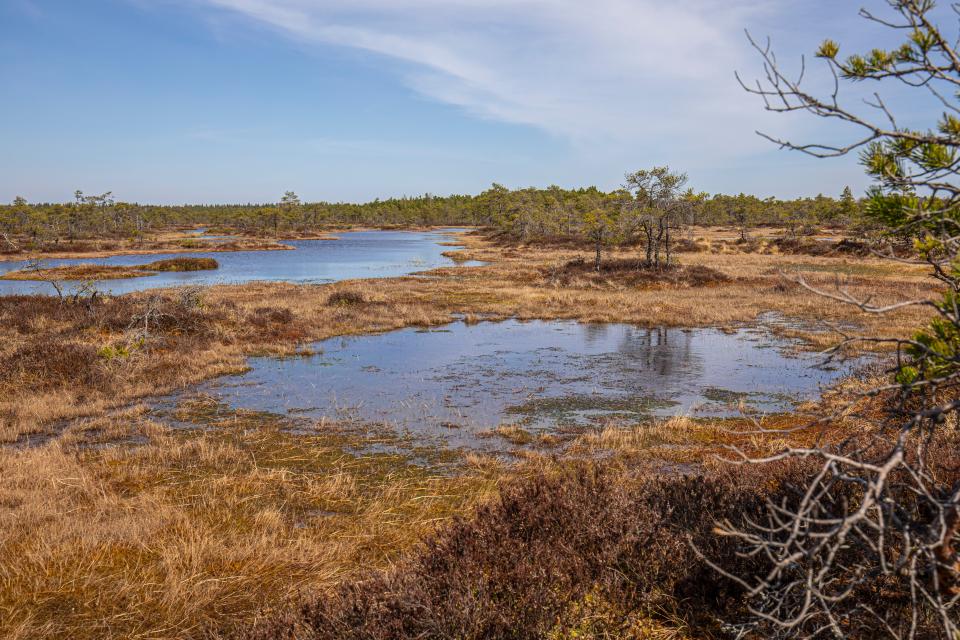This year, the State Forest Management Center (RMK) will restore nearly 2,400 hectares of bogs, peat sowing was tested in Ess-boose in Võrumaa.
The largest area to be restored this year is in Alutaguse National Park, a total of 1,320 hectares. Oil shale mining and the construction of drainage ditches have had the greatest impact on the Puhatu swamp there.
Last fall, 18 hectares of peat moss were planted during the restoration works of the former mining area of Ess-soo in Võrumaa. The moss was sown in the end of the nineties on an abandoned milling peatland, where for almost 20 years the vegetation characteristic of the bog has not really started to recover.
According to RMK nature conservation specialist Priit Voolaid, it is still too early to assess how successful the spreading of peat moss turned out to be. "This year's summer was very dry, and in the meantime there was a fear that it would spoil the plans, but fortunately enough peat moss collections were preserved for vegetation. The next few years will give a clearer answer," Voolaid said. The water level of the various fields has been established quite well on average in Ess-soo.
Restoring marshes is a job that takes time to see results. In order to evaluate the effectiveness of closing the drainage ditches, a hundred monitoring wells have been built in the restored swamps, which can be used to find out how high the water is in relation to the ground. If necessary, additional works are carried out to bring the water level to the desired level.
Wetlands need to be restored because they are a habitat for many rare species of plants and animals, and they are also important carbon sequestering ecosystems and custodians of clean water supplies.
During the restoration works, the former drainage ditches, mostly built during the Soviet era, will be closed so that the water rises close to the ground. If necessary, the forest that has grown as a result of drainage is cut down and sown with peat moss to restore the marsh vegetation.



